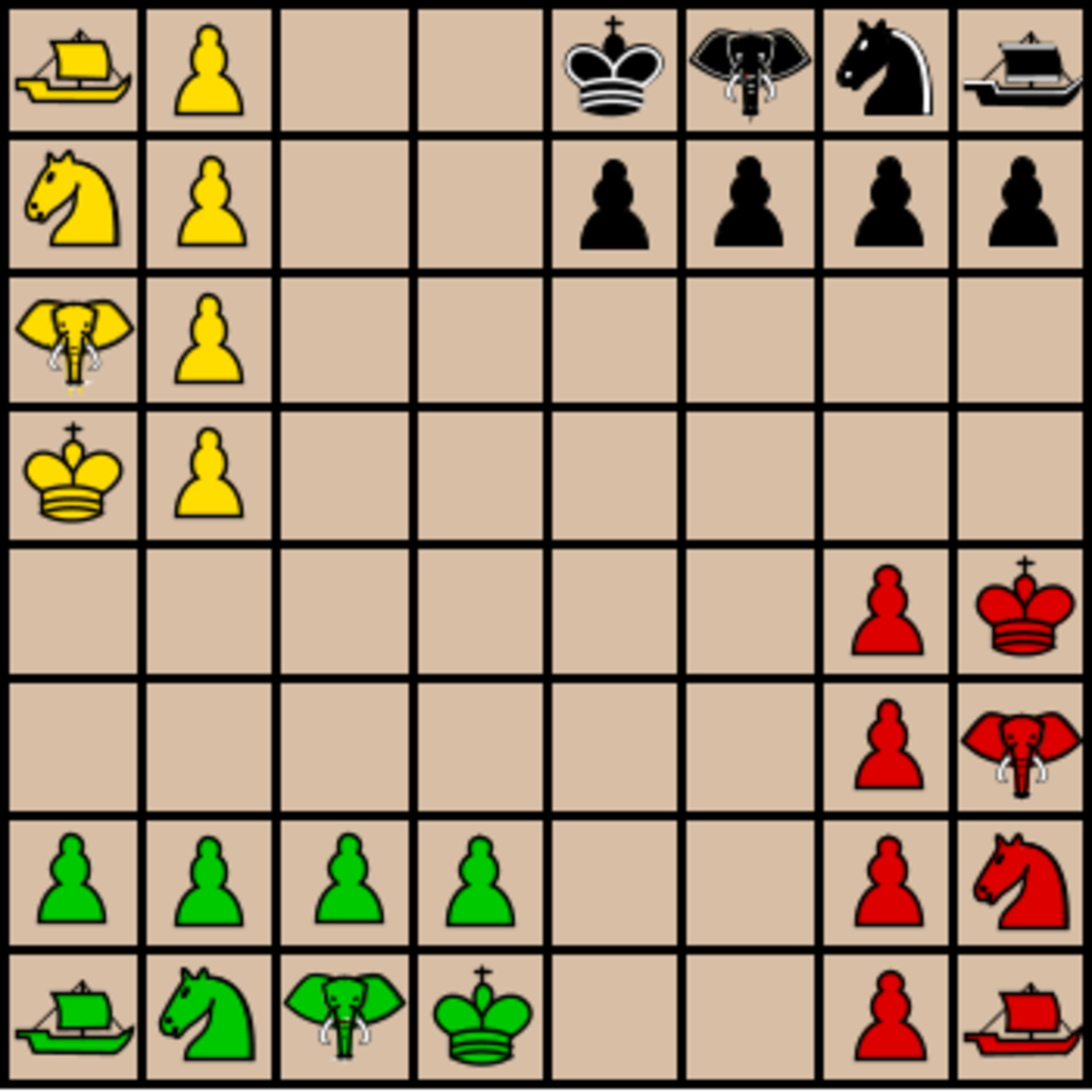Ancient Board Games: Chaturanga
History:
This game from 6th century India is believed to be the ancestor of chess and other games (worldwide!) like it.
There are a few things that set Chaturanga aside from modern chess. For one thing, unlike modern chess, this game can be played with up to 4 players. In 750 CE, this version of chess reached China, and by the 11th century it had come to Japan and Korea. It went through Persia and into Europe around the same time.
The theory of the game’s spread revolves around the Silk road, an ancient trade route spanning from Italy in Europe to Xian in China. This trade route moves through land and sea, and facilitated trade of all kinds.
It’s due to the silk road that it can be hard to determine the origins of chess, as pieces simular to what we know have been found all over 3 different continents.
Like other ancient games, some of the rules are up to speculation.
What we know about the rules and play:
Of the pieces that we know of today, the rook, knight, pawn and king move the same. However, The kings do not face each other (aren’t in the same column), and the pawns don’t have the option to move 2 spaces on their first move.
The Queen was the Counselor, and could only move 1 square diagonally. The Bishop was the Elephant, and could only move 2 spaces diagonally.
One of the theorized rules is that the pawn, instead of automatically becoming the Queen/Counselor, would actually become the piece that occupied that square in the beginning.
Chaturanga was won by what we know as checkmate, or by eliminating all pieces except the king.
Castling and En-passant weren’t introduced until the 15th century, and the checkerboard pattern we associate with Chess was only introduced as decoration around the year 1000.
What I found to be interesting, was that in the 4 player version of Chaturanga, what piece you played was determined by dice throw, which completely change the flow of the game. The dice is a D4, and the sides are as follows: The Raja (king) and pawn, the knight, the elephant (bishop), and the boat (rook). The four player, as you can see, does not include the Counselor.
Where to play?
You can buy physical boards around the internet, or just use a regular chess set, and modify the rules.
You can play online here, but you have to sign up, and there are a few apps that allow multiplayer versions of the game.






